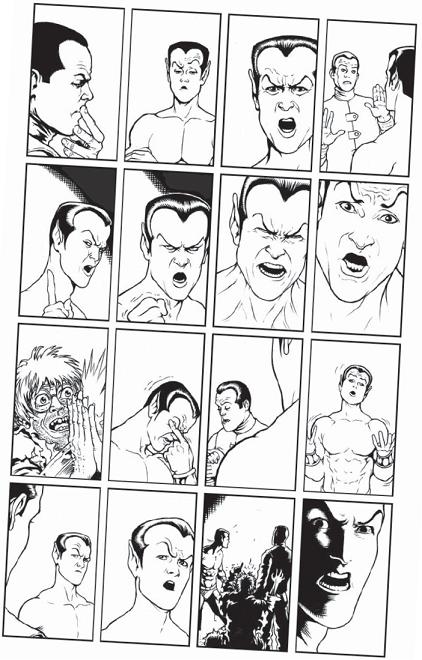
5 CHARACTER ACTING
Even the best layouts with the perfect camera angles and lighting will fail to stir up the reader’s emotions if the characters within the panels can’t act. Comics, in this regard, are similar to the movies. For me, the movie Speed was like this. It was a fun action movie—fast-paced, snappy dialogue, cool special effects, but the actors failed to convince me they were in danger. Both lead actors in that movie have given performances that I’ve liked in the past and since making Speed, but for whatever reason, they couldn’t draw me in.
The same problem can occur in comics. If the body language and facial expressions don’t communicate emotions to the reader, the comic will not be engaging. Let’s be honest for a moment—this is the biggest shortcoming in superhero comics today. We put our superheroes in brightly colored costumes and dramatic situations so the body language is all that’s needed to communicate. Those costumes are not a substitute for real emoting. This isn’t to say that no superhero comics artists do great facial expressions—many, in fact most, of them can, but they’re not required to do so while drawing Spider-Man. That said, Mary Jane Watson and J. Jonah Jameson, Spider-Man’s supporting cast, have to be very expressive.
There are two basic forms of character acting:
1 Body language
2 Facial expression

Getting Angry
Artist Kevin Maguire is best known for his expressive facial expressions. Note how annoyed the Sub-Mariner becomes in panel 10, and then how defensive he is in panel 12.
Defenders #5: ©2008 Marvel Characters, Inc. Used with permission.